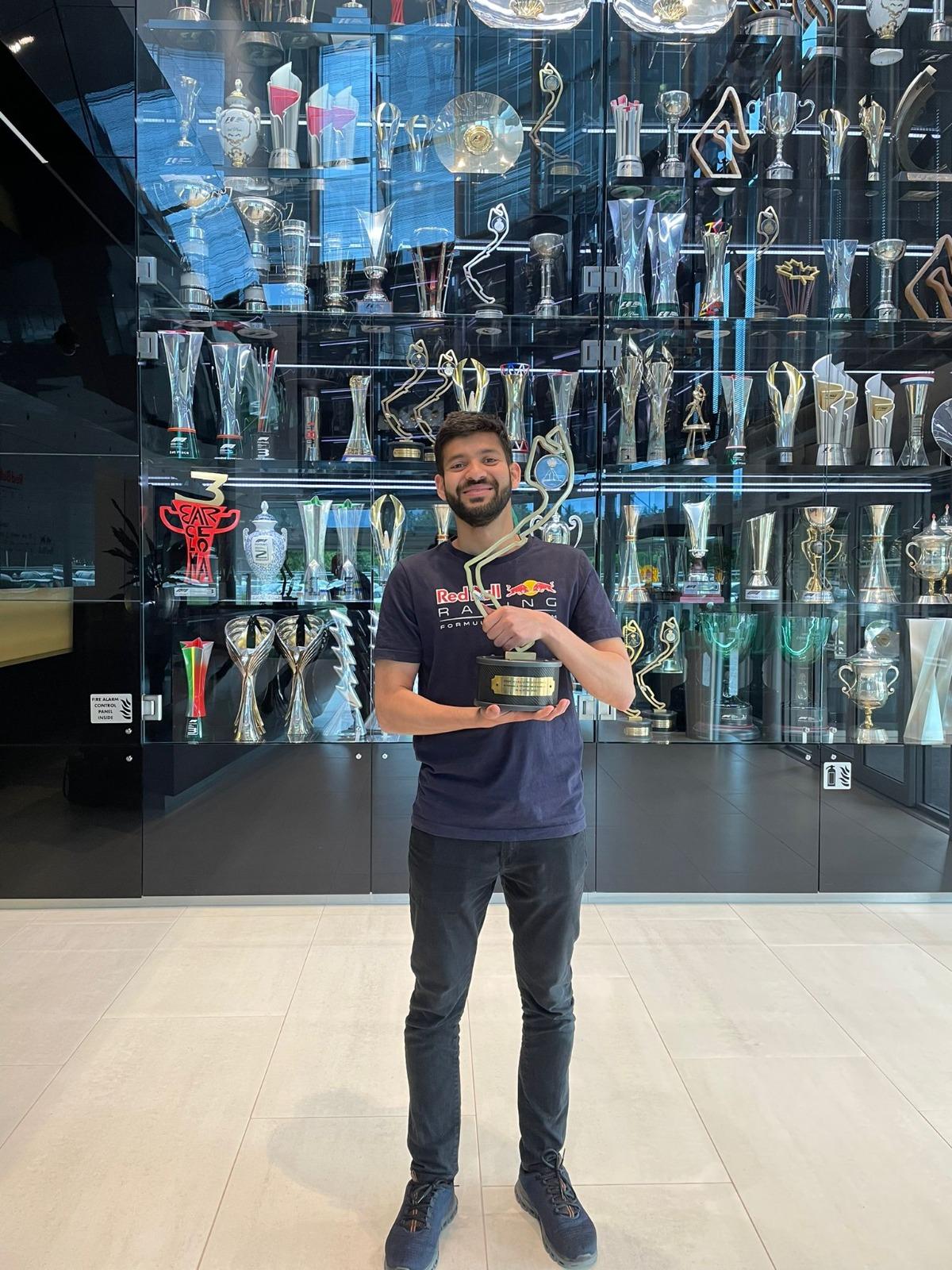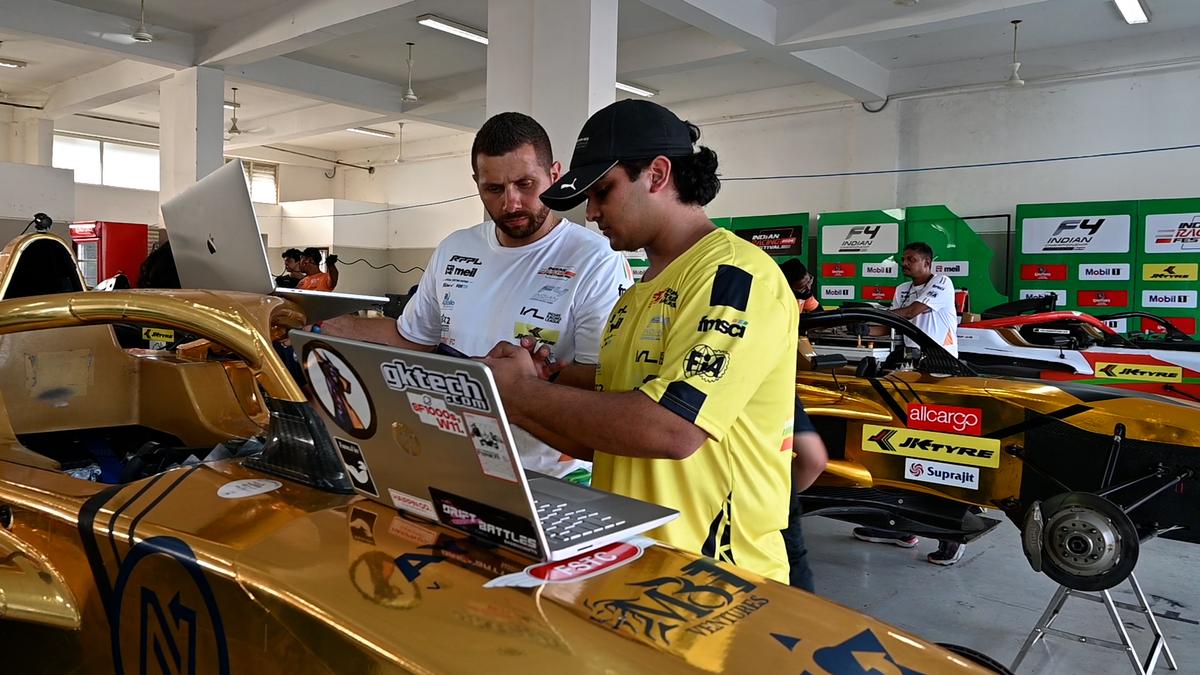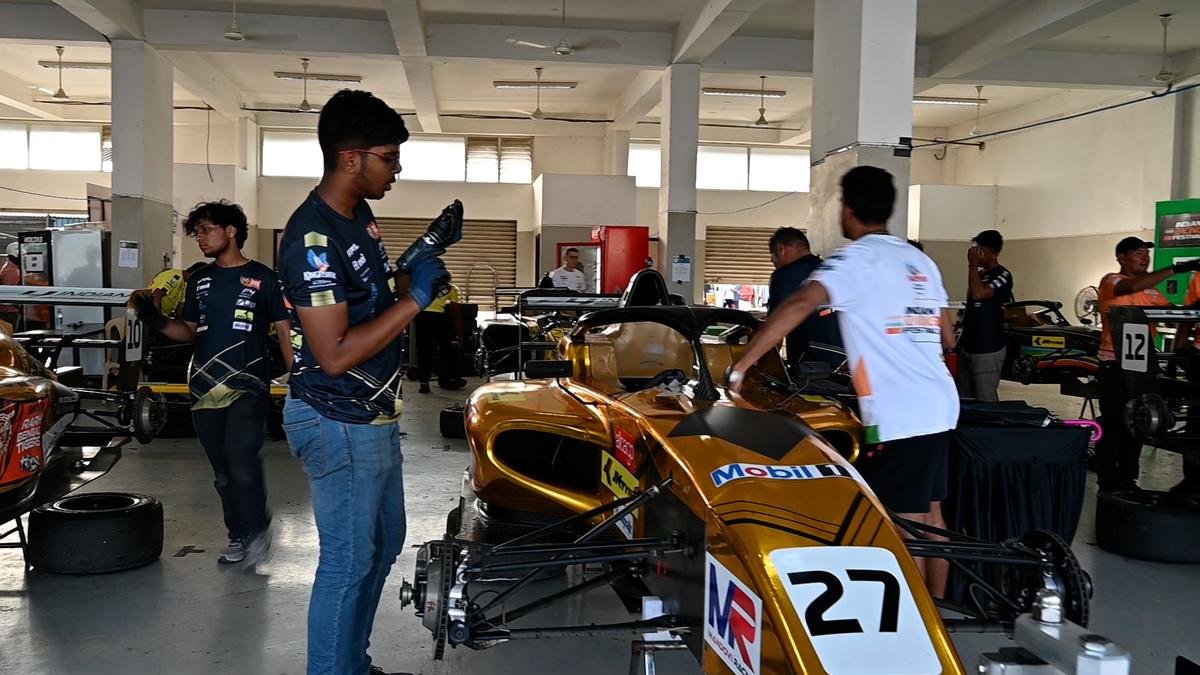The third season of the Indian Racing Festival began last month at the Madras International Circuit on the outskirts of Chennai, followed by the second round at the Chennai Formula Racing Circuit, a first-of-its-kind night street race in India.
The festival has two championships: the franchise-based Indian Racing League (IRL) and the Formula 4 Indian championship. The F4 Indian championship is the first step in the ladder for youngsters looking to graduate from karts into formula car racing. By having it in India, the organisers hope to help young Indian drivers stay in the country and do the series at a fraction of what it would cost to do the same category in Europe.
While helping drivers is one part of the equation — and it remains to be seen how much it can improve — the league is having a more profound impact on another group of young Indians who want to have a career in motorsports.
The drivers are the sport’s protagonists, showing immense grit and bravery to throw around mean machines at eye-popping speeds with control and precision.
Beating heart
But there is another group of people who are actually the sport’s beating heart, helping design and run these machines — the engineers.
The cars used in the F4 and IRL are made in Europe, and engineers from abroad are needed to run them. For example, the F4 cars are run by a Dutch team called MP Motorsport, which competes in the feeder categories like the F2, F3 and a few regional F4 championships.
But since last year, there has been an attempt to address this gap by adding more Indian engineers to the mix. During the first two rounds of the 2024 championship in Chennai, youngsters — graduates and those still pursuing their degrees — were seen working with laptops to download data and running with car parts up and down the pitlane.
These students are part of the United Motorsports Academy (U.M.A.), an initiative started by a former F1 aerodynamist to help Indians become motorsport engineers.
After undergoing a two-week course at U.M.A., they qualify for an internship in the IRL and F4 series as part of a scholarship called L.I.M.E. (Launchpad for Indian Motorsports Engineers).
The enterprise is the brainchild of Shubham Sangodkar — who worked with the Red Bull Racing F1 championship-winning team in 2021 and 2022 — and Omkar Rane.

Shubham Sangodkar.
| Photo Credit:
Siva Sankar Arokaran
“After returning to India, I started giving guest lectures, and the problems I saw 10 years ago were still there in that there was no real platform for someone who wants to be a motorsport engineer,” Sangodkar explained on what prompted him to start U.M.A.
“So I took a step back to see what I can do. I did some career counselling and recorded an online course that went viral, which has 1200 students,” he added.
“But, there is a bigger problem to solve, and that’s how U.M.A. came up. I then collaborated with Akhilesh Reddy and Aditya Patel (the co-founders of the IRL), and they wanted to do this as well. So, I offered to take up this vertical.”
For Sangodkar, the aim in four to five years is for Indians to make up 80% of the engineers in the F4 India championship.
“My vision is to create a programme that allows us to do that. Last year, we did a four-day programme, which was not optimised because of the timing. But this year, we could do what we wanted to last year,” said the former Red Bull engineer.
As part of that, U.M.A. conducted a 13-day workshop earlier this year for a cohort of 146 applicants, which involved an equal number of days for theory and practical training in Mumbai.
Photo Credit: Siva Sankar Arokaran
The course was conducted by Rex Keen, a former race engineer and technical director who has worked in various motorsports categories. It was held at the D&O Motorsports garage, where the students got classes on one side and hands-on experience on the other side of the garage.
At the end of the course, the students took an open-book test, in which 24 qualified for the L.I.M.E. scholarship to do an internship this year at F4 and IRL. Even last year, 24 students graduated from L.I.M.E. 1.0, some of whom are back for a second time this year.
The students learnt about corner balancing, wheel torques, the architecture of an open-wheel car, and double-wishbone suspension. This season, 36 people who have come through this programme are currently involved. These interns do everything the chief mechanic asks, from noting track temperatures and tyre pressure throughout the day to helping adjust set-ups. Seven junior race engineers in this cohort do all the data work after the sessions.
Going forward, Sangodkar said the aim is to create the next lap of the ladder and nurture this talent. “L.I.M.E. is right now an identification and upskilling programme. My vision is to nurture talent and provide 100 opportunities for motorsport volunteering at a high level in this country, and out of that, take 10-15 abroad and provide the opportunity.”
“People who do this, their resumes stand out. Whether it is a scholarship you are looking for while applying abroad or a differentiation in the market when trying to get a job with the big manufacturers, it helps,” Sangodkar added.

Photo Credit: Siva Sankar Arokaran
Success stories
One of the success stories of the L.I.M.E. programme is Mrugank Divekar, who participated last year and is working in the FIA F2 series. Divekar, who impressed his engineer during the 2023 season, was referred to work in the upcoming F1 movie starring Hollywood star Brad Pitt. The opportunity to get onto the F1 grid during shooting helped Divekar network and eventually land a job in F2.
Marc Stephen, a third-year Mechanical and Automotive engineering student from VIT Vellore, is doing this internship for the second year. “Last year, I was with the F4 championship, and it was about observing and learning. This year, I get to work on the car. I am the primary data engineer for the Kolkata team in IRL. So, after every session, we check reliability and collect data,” said Stephen.
“What we are learning here correlates to what we study in college. You never learn something like this anywhere else. In mechatronics, there is something called Electronically Controlled Solenoids. We saw that being used here. Similarly, we opened up an engine and did a compression test. These are stuff you read about in college, and we are doing that here.”
Pranav Rao, a fourth-year engineering student from Bengaluru who is also doing this internship for the second year, credits the U.M.A. for coming up with such an initiative.
“What we do here is the a-b-c-d of putting the car together. We are doing data work, understanding the car inside out, the tyres, driver coaching and psychology. We get to sit with MP Motorsport guys and learn how a race weekend goes. These guys won the F2 championship last year. So this is an amazing platform.
“During the two-week course, we started by understanding suspension systems, a bit of aero, and vehicle dynamics and brushed up on our basics. Our mentor Rex Keen has been drilling us with a lot of knowledge, and because of that, our basics are solid,” he added.
Akshara Vinjamuri, a third-year Electronics and Telecommunications Engineering student from Symbiosis Institute of Technology, was a trackside engineer last year and is a junior race assistant engineer in the F4 category this year.
“This year, I got to do many more things and have more responsibility. My job is to sit with the chief engineer and understand how he handles the weekend. They do data and the knick-knacks of cars. They predict what to do and what will happen next,” explained Akshara.
“There is a lot of analysis, which I’m picking upon. You can’t learn analysis because everyone has their own thought process. I am here to understand what my thought process is and how I can put that into practice. I see what my engineer is telling the driver so I can handle it myself in the future. It is a great learning curve. You can’t rote learn, but you must understand,” she added.

Photo Credit: Siva Sankar Arokaran
Akshara also felt the L.I.M.E. programme is a great way to have more women in motorsports. “I would like other women to follow my path. If there is any woman interested in motorsports, they should come to U.M.A.”
India, especially South India, is known to produce thousands of engineers every year. So why hasn’t motorsport engineering taken off? According to Sangodkar, one reason is that the mechanical engineering department is undervalued in Indian colleges.
“The mechanical engineering department is one-tenth of the size of Computer Science or IT. So colleges and universities are finding it difficult to run it qualitatively because the fees pay for the equipment and professors.”
“If we can infuse motorsports as part of the curriculum in mechanical engineering, we can make it attractive and lucrative. But it needs a sustained push,” he said.
The programme is open to applicants over the age of 16, and students do not necessarily need an engineering background. Sangodkar even cites an example of a student from a commerce background who has a passion for motorsport and came second in the test.
“It is the vision that we collectively have at U.M.A. and RRPL. Together, we want to build the entire ecosystem, and we can’t have one without a strong grassroots. There is good support from RRPL and scope for taking a few junior race engineers and mechanics to a championship in the UAE or elsewhere.
When that happens, you get calls from race engineers to come and work for one or two race weekends, and that’s how this ecosystem grows. In four or five years, you will have enough Indians within this ecosystem, and it will grow,” Sangodkar said as he signed off on a hopeful note.
Published – September 17, 2024 06:19 am IST

